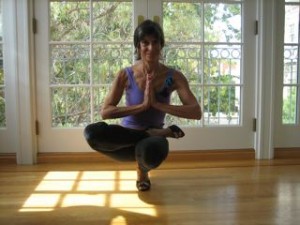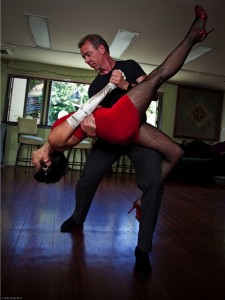Appeared in Yoga Journal, March 09
 My yoga practice is old. Which maybe is why I feel young—well, much younger than 57. My practice goes back to a book by Yogi Vithaldas, which fell into my hands from a remainder pile in San Francisco more than 30 years ago. As they say, when the student is ready, a teacher appears.
My yoga practice is old. Which maybe is why I feel young—well, much younger than 57. My practice goes back to a book by Yogi Vithaldas, which fell into my hands from a remainder pile in San Francisco more than 30 years ago. As they say, when the student is ready, a teacher appears.
I always trusted in my own divinity, probably the legacy of my Catholic upbringing. But yoga was my bridge from the monotheistic split of body and soul to the experience of body and soul as one. Yoga helped me locate the divine in my own body, in a place beyond word or thought. Over the years, under the guidance of many teachers, I gradually awakened to my one little body as being the universe with all its finite and infinite boundaries. To use a Zen metaphor, I was like the tiny dewdrop that reflects the entire moon.
My yoga and meditation practices prepared me in a way that no other disciplines could have for a passion for Argentine tango, which I discovered much later in life under similarly fortuitous circumstances. My well-oiled joints, limber spine, and oft-massaged internal organs were solid physical grounding for a dance that I have come to consider part of my yoga practice. And yoga’s spiritual centering prepared me for tango’s demand for total presence and surrender of ego.
 Tango was born among nineteenth-century immigrants of a desire for intimacy, or “connection” with other, the way yoga was born of an urge to connect with the energy of the cosmos. In tango, the leader and follower must be fully present, surrender their egos, and not think. They move heart to heart in linear or circular motion, sharing a fluid balance that emanates from the spine or axis. Etiquette dictates that we not talk while dancing tango: “Connection,” in the form of this non-verbal dialogue, is the ultimate measure of a tanguero’s mastery. When I lean torso to torso with my partner and we step in sync to the music, I leave artificial time behind. My breath is deep, boundless, and effortless; my heart chakra blossoms like a thousand-petal lotus. We connect, human props for each other, in a rapturous yogic flow.
Tango was born among nineteenth-century immigrants of a desire for intimacy, or “connection” with other, the way yoga was born of an urge to connect with the energy of the cosmos. In tango, the leader and follower must be fully present, surrender their egos, and not think. They move heart to heart in linear or circular motion, sharing a fluid balance that emanates from the spine or axis. Etiquette dictates that we not talk while dancing tango: “Connection,” in the form of this non-verbal dialogue, is the ultimate measure of a tanguero’s mastery. When I lean torso to torso with my partner and we step in sync to the music, I leave artificial time behind. My breath is deep, boundless, and effortless; my heart chakra blossoms like a thousand-petal lotus. We connect, human props for each other, in a rapturous yogic flow.
In Buenos Aires I assisted a teacher who admonished his students, “Not two, one!” His command for dancers to let go of the idea of a separate self echoed Zen teacher Suzuki Roshi, whose instruction, “Not two, not one” was similarly intended to teach us to not count the world inside and outside ourselves as separate phenomenon; in fact, not to count at all.
If it was on the mat that I first learned these lessons, experiencing this union on the dance floor has taught me to be open to finding the divine everywhere. People think I’ve got something special, but I tell them that everybody’s got tango. Tango is simply a metaphor for anything, whether it’s as humble as peeling potatoes or as lofty as walking tightropes, that takes you deep into the yogic union. It’s the relationship you have with whatever consumes you, takes you out of this world to an inexplicable place of connection and then delivers you back, renewed. In these moments, I think you discover the true meaning of yoga.
As always, you give us insight into many worlds within the one. XXO